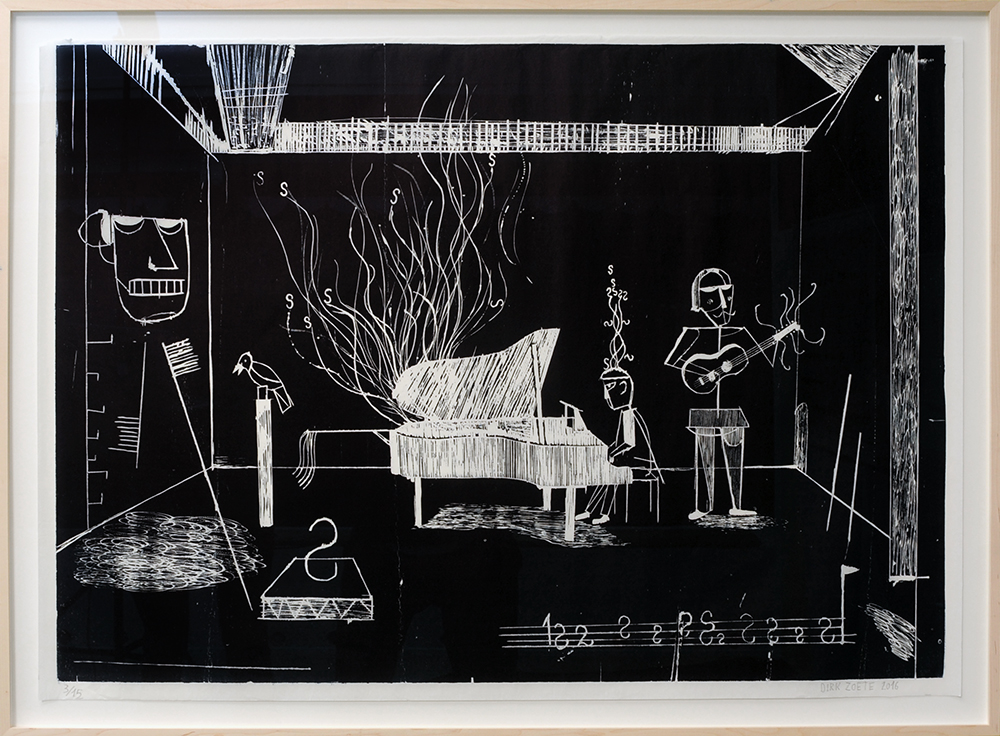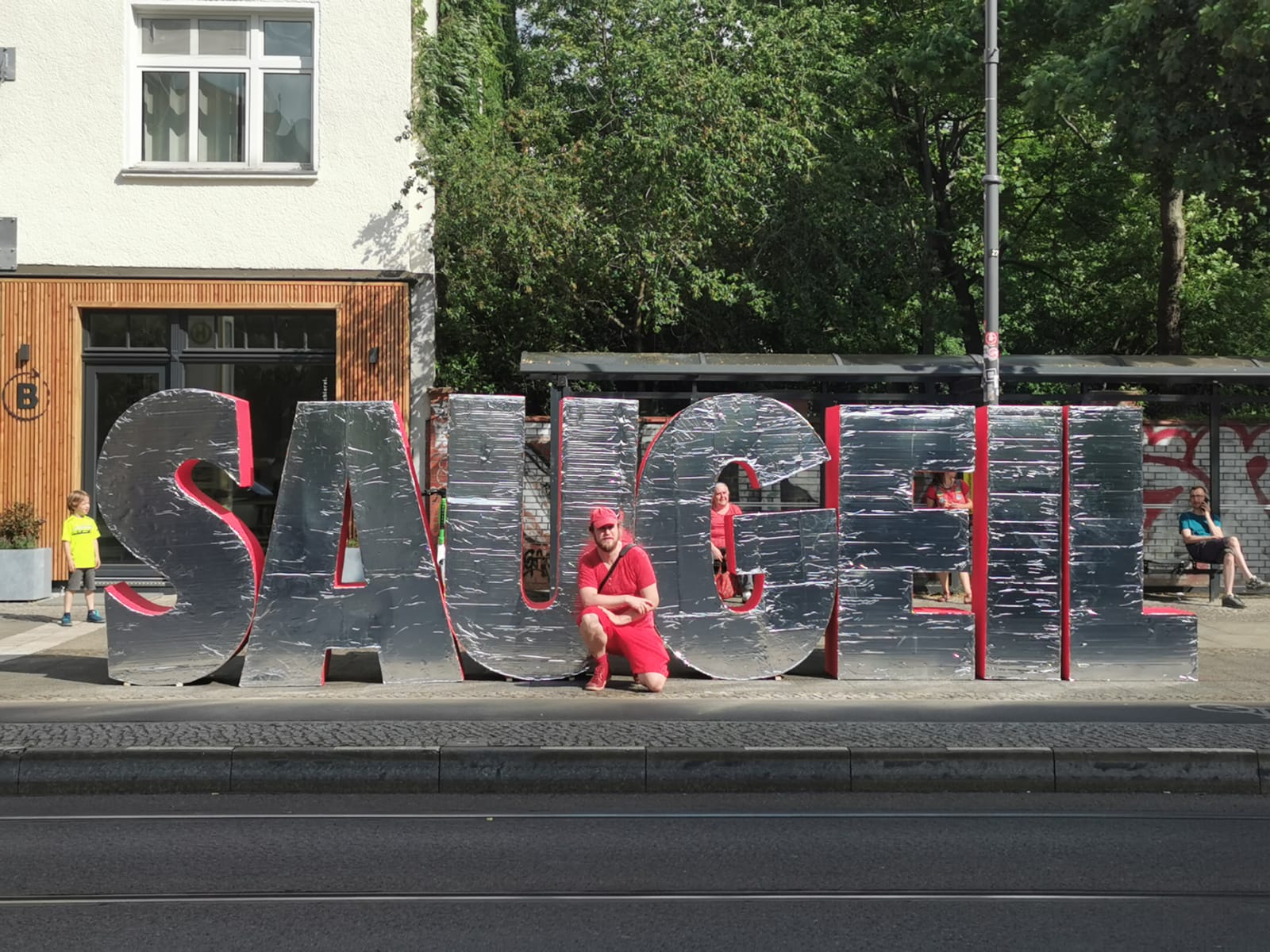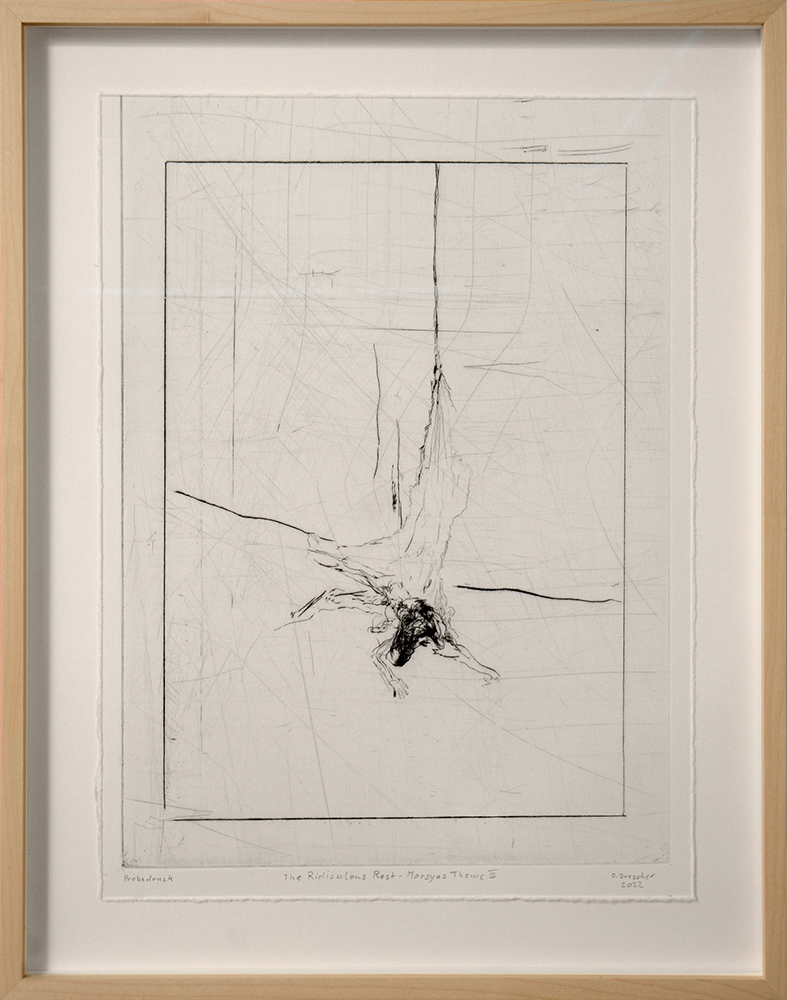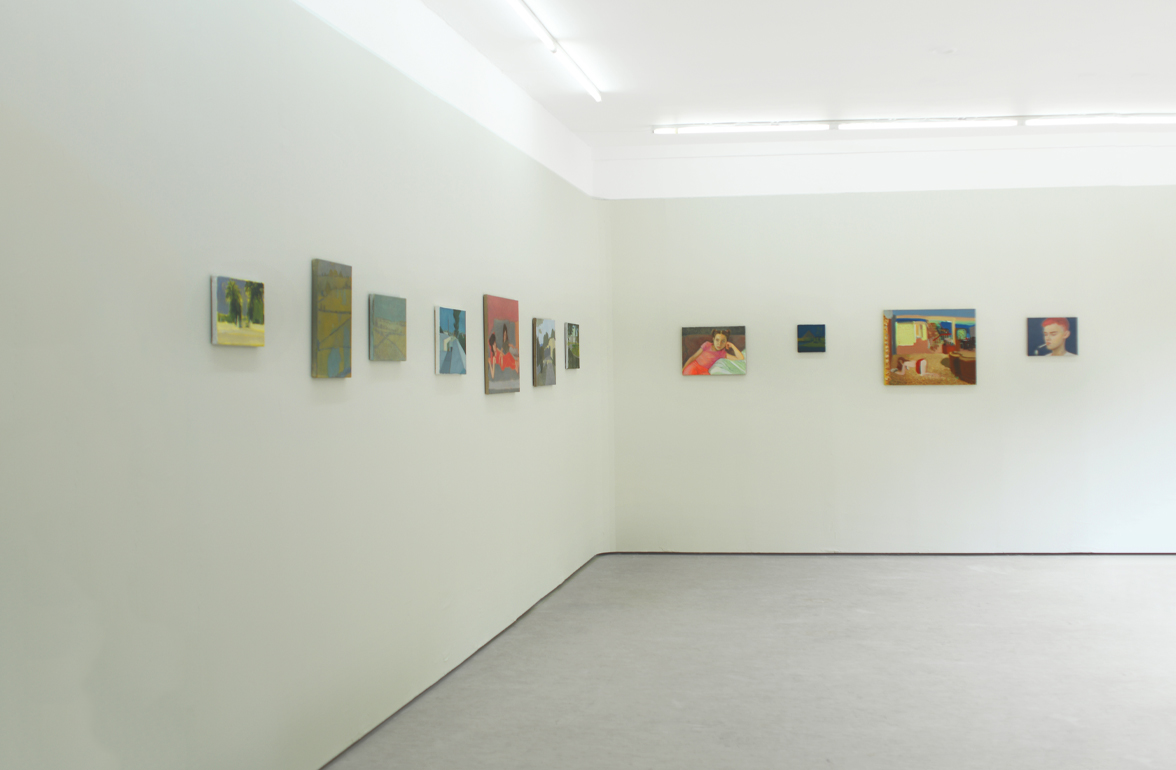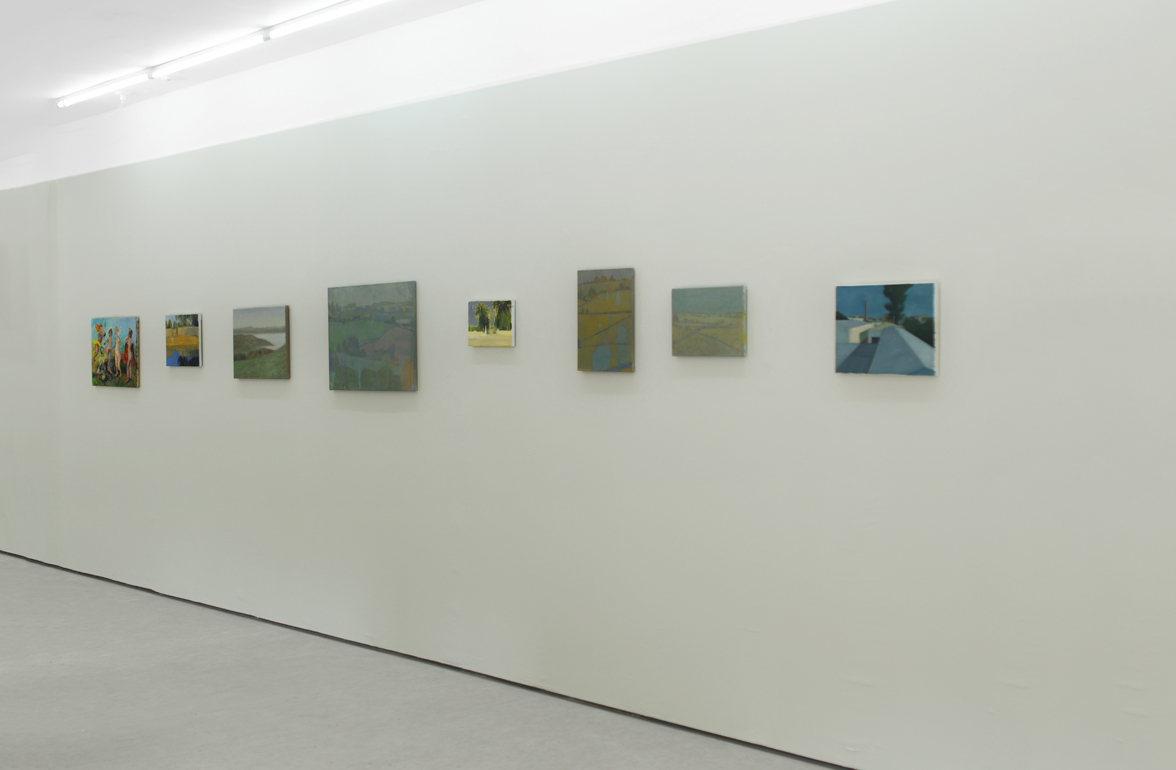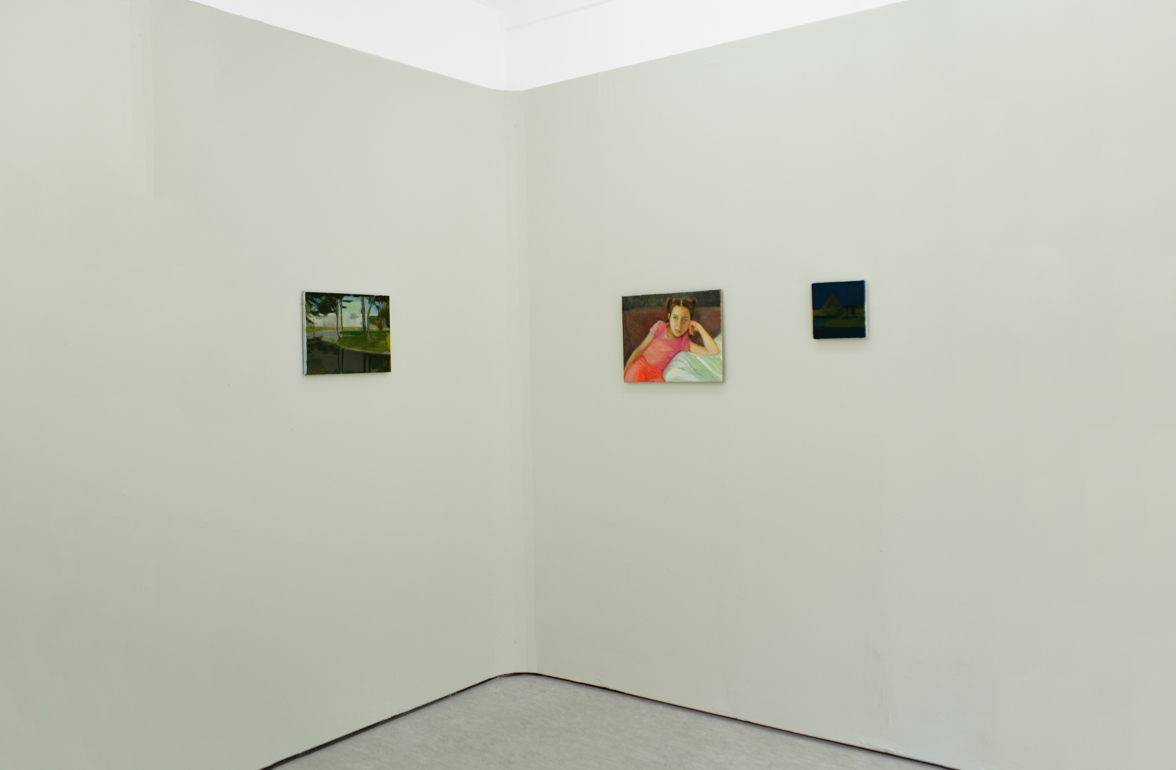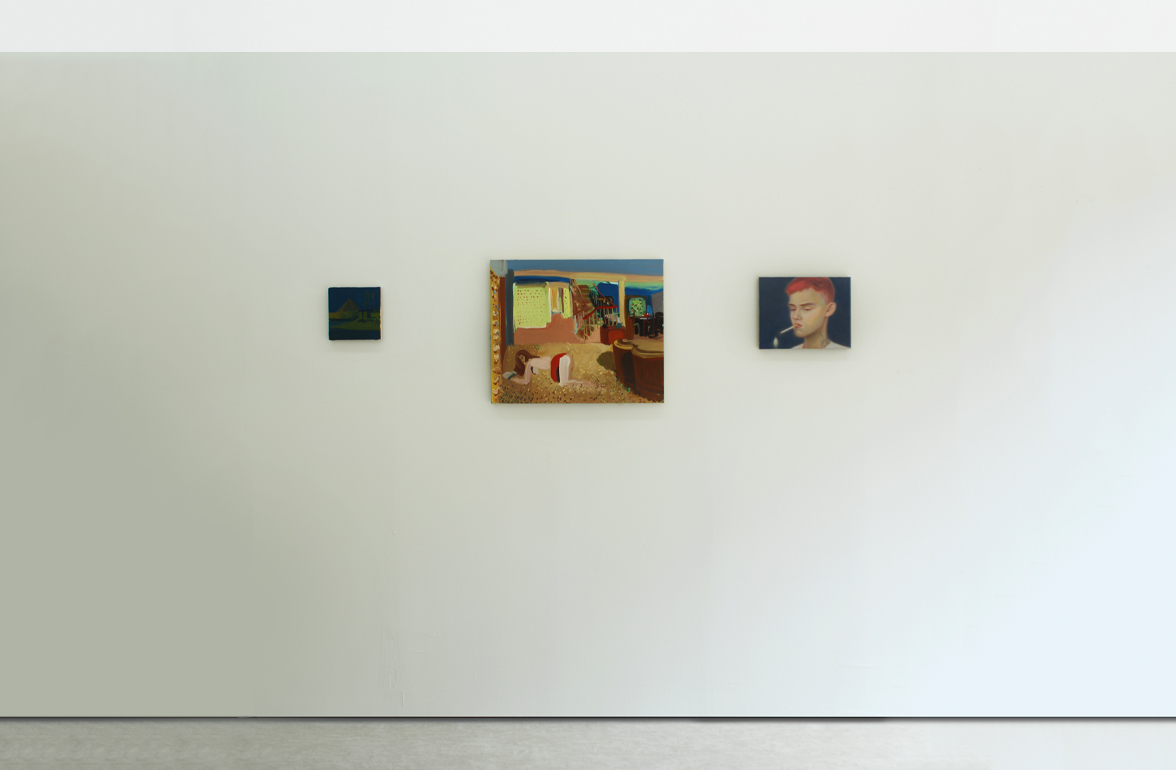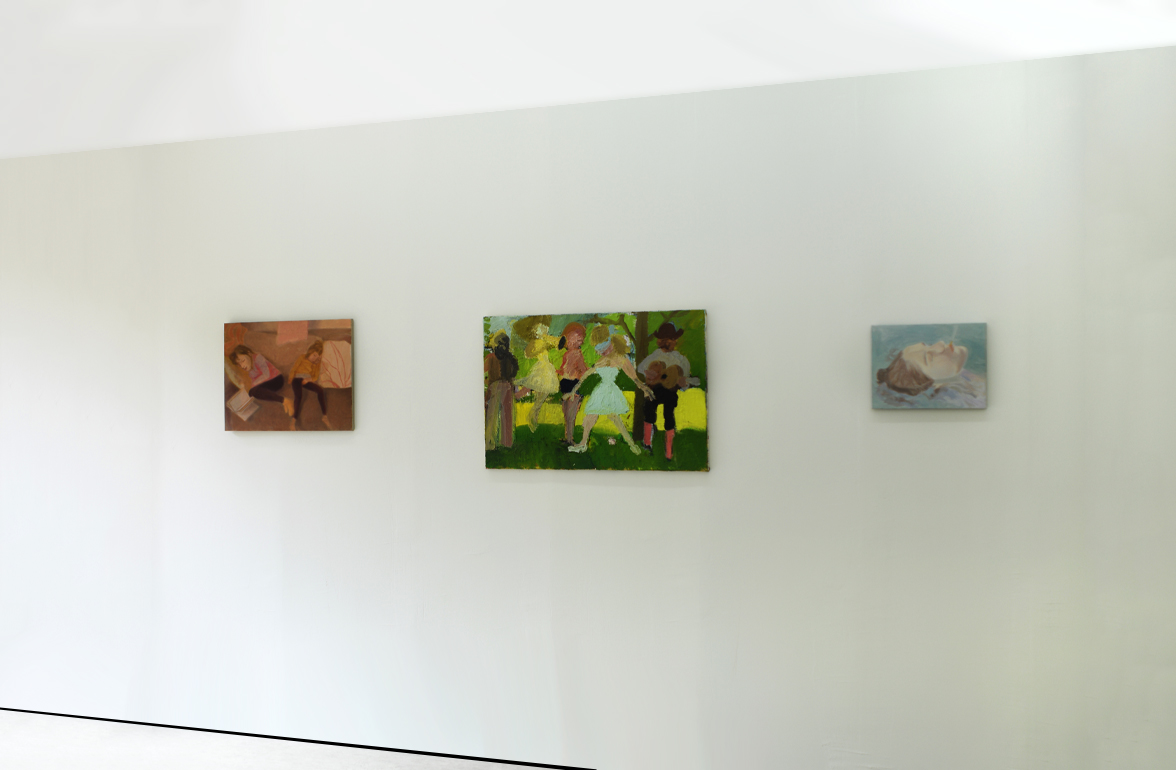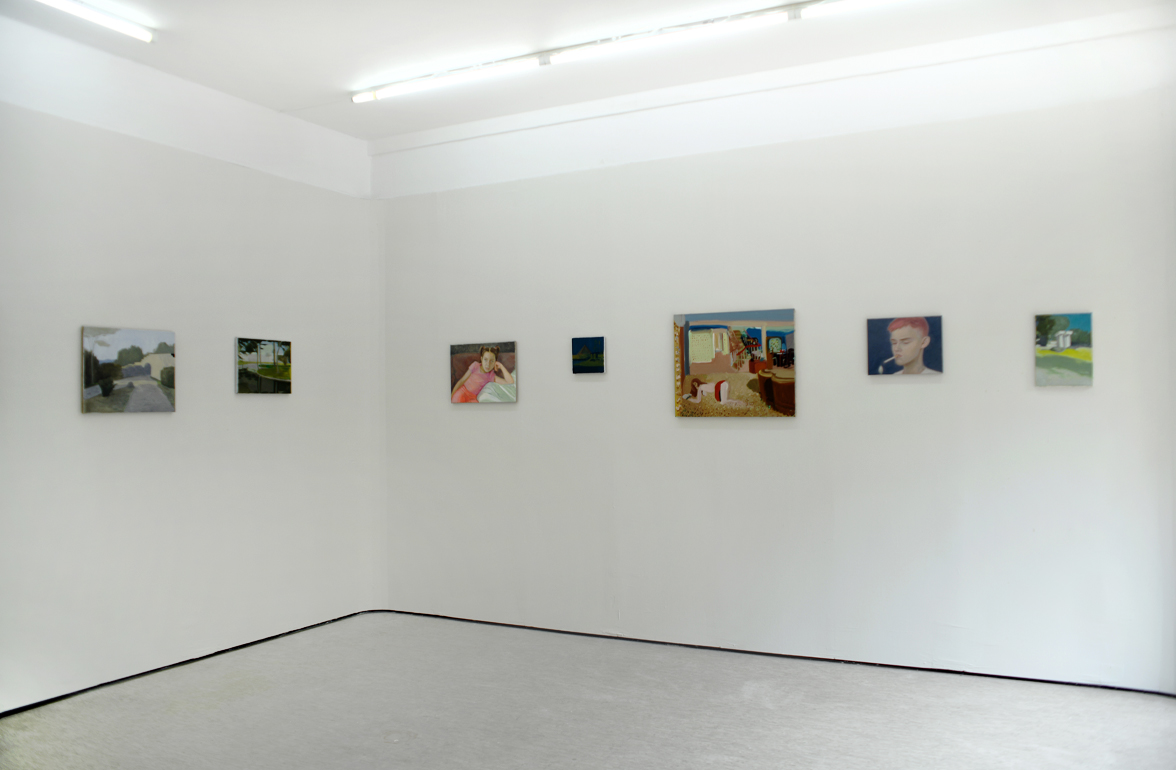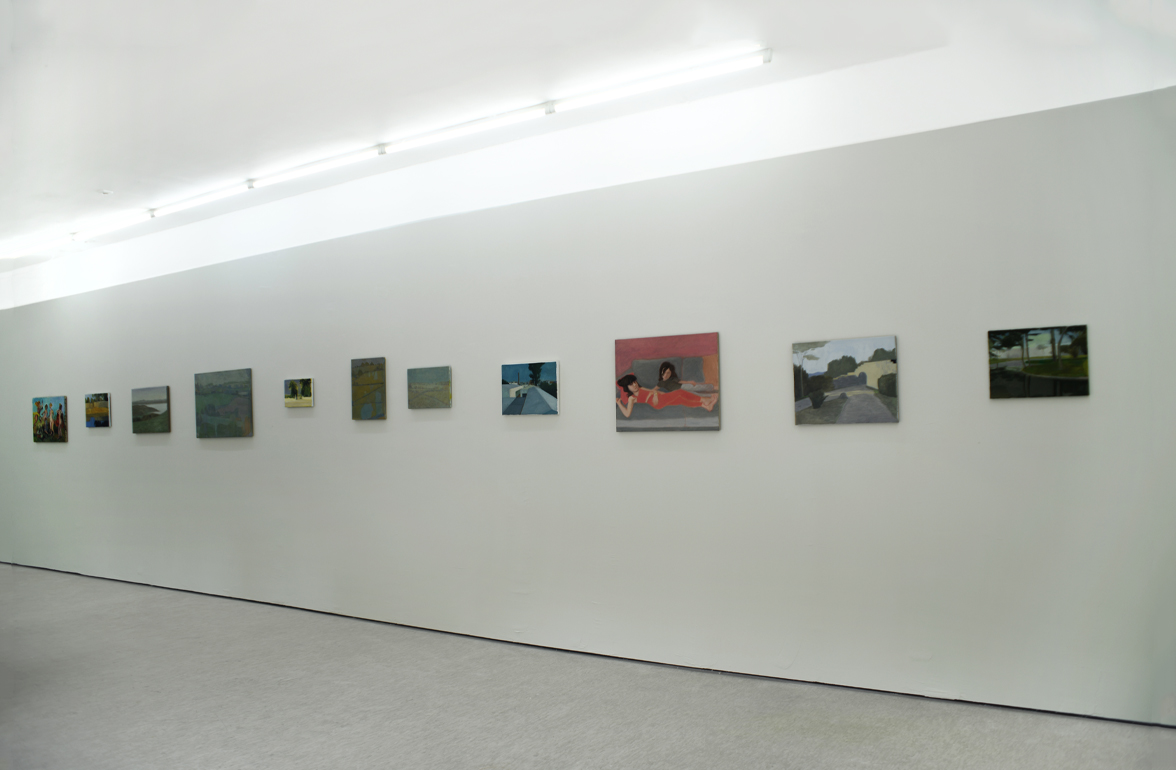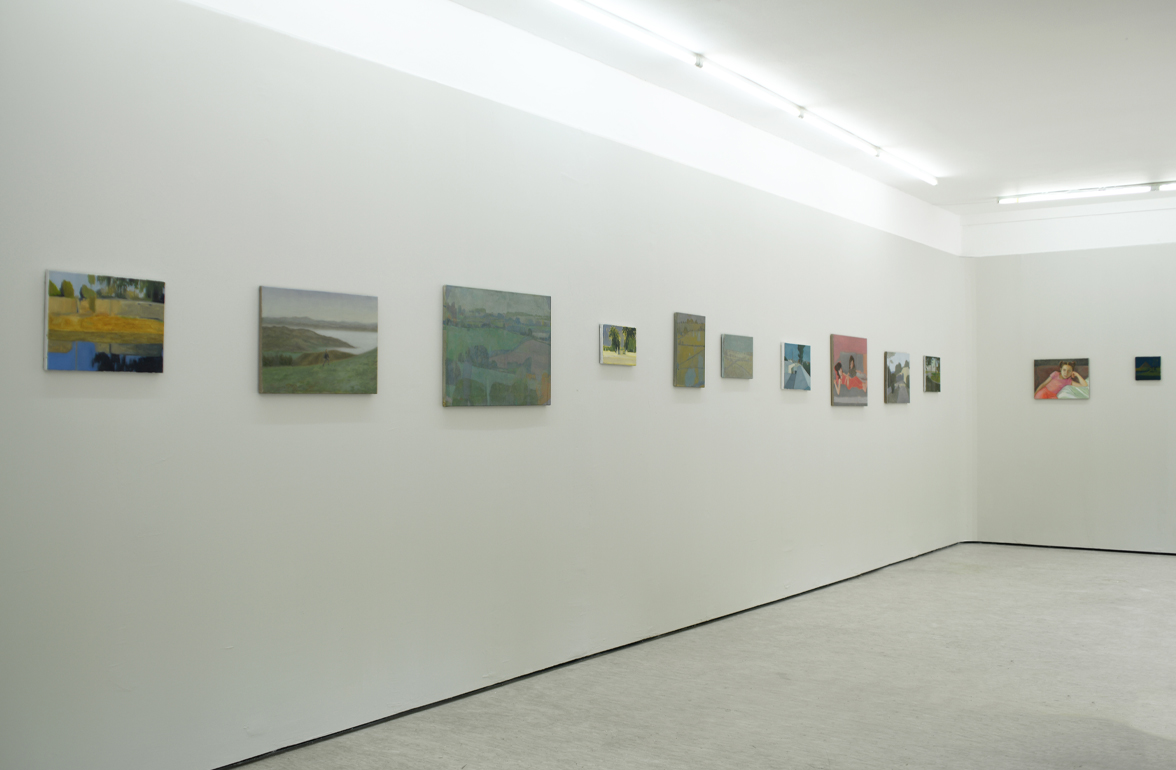Claus Voss Cordeiro, David Abbott, Juan Fernández Álava, Ofir Dor: Novus : Verena Kerfin Gallery, Köthener Strasse 28, Berlin 10963
Past
exhibition
Overview
The current exhibition marks the opening after the summer break, featuring a group exhibition of paintings by four artists from Israel, Porto in Portugal, Bristol in England, and Gijon in Spain. The focus is mainly on small formats created using oil on canvas. The artworks showcase a diversity of themes and subjects, ranging from serene and flat gestures to bold and expressive brushstrokes. The exhibition unveils the distinct personal styles of the artists, spanning from depictions of absent figures and empty spaces to portraits and landscapes blending into intricate, carpet–like abstractions through interplay of light. The expressive forms vary from subdued pastel tones to vibrant full colors.
„To see the countryside transfigured by the individual psyche is a crucial function of the landscape painter.Landscape by itself is meaningless, but it works on our feelings in profound ways, arousing in us a sense of ourselves in relation to the outside world. What does it feel like to stare up at the night sky or to confront a mountain? A picture which mimics the appearance of natural phenomena will miss the point, not just of their essential nature but of ours too. Instead, some equivalent. has to be found: an equivalent of the way in which they act on our sensibilities.“ – Christopher Neve
David Abbott is a painter based in Bristol, specializing in landscape representations. His works are characterized by a serene expression that portrays landscapes in a manner that presents a distinct essence and character for the viewer to contemplate. The landscapes are not merely seen as static backdrops but as living entities that we can animate with our gaze and psyche.
Abbott often prefers to depict landscapes from elevated viewpoints or bird’s–eye perspectives, which lends his works a unique depth and offers viewers new perspectives on nature. At times, the landscapes are abstracted to transform into a two–dimensional arrangement of abstract forms, inventing their own connections on the canvas. Spots evolve into lines, and red tones take on a subdued blue–gray hue.
In Abbott’s landscapes, there are no visible human figures, or if present, they appear to integrate into the fabric of abstraction as flat planes or forms. The color palette he chooses is gentle and restrained. However, the muted saturation of colors paradoxically enhances their intensity.
For instance, a red field can rise as a commanding and dominant blot, yet tamed by delicate pathways in its wildness. The atmosphere captured in Abbott’s works exudes a gentle and welcoming ambiance. Observing his paintings, one can almost sense the artist’s pleasant and temperate stroll. It is as though Abbott employs his brush and palette to invoke a pleasant stirring of memories and associations, while invisibly merging with the experience of his stroll through the landscape.
Abbott’s creations are the result of a synchronization of inner and external experiences. His artworks reflect both his personal sensibilities and impressions of the outer world. They invite viewers to calmly contemplate their certainty and experience, imprinting the inner and the outer as a cohesive encounter. Abbott’s paintings are nourished and charged by a unique fusion of inner and external perceptions.
„How can I number the worlds to which the eye gives me entry? – the world of light, of colour, of shape, of shadow: of mathematical precision in the snowflake, the ice formation, the quartz crystal, the patterns of stamen and petal.“ – Nan Shepherd
Claus Voss Cordeiro, born in Kiel and raised in Brazil, is a contemporary artist currently based in Porto, Portugal. His works are characterized by a diverse array of motifs on small formats. Among these motifs are street scenes basked in midday sunlight, with interplays of light and shadow, palm trees, and deserted environments that exude a tranquil atmosphere. The depictions also encompass park areas from the immediate surroundings, as well as subjects such as pyramids or Sphinx statues bathed in gentle light.
Cordeiro’s color palette tends towards reduction, primarily comprising pastel hues and subdued grays. He often incorporates large monochromatic expanses and harmonious color gradations into his compositions. The paintings feature deliberate representations of intense sunlight, soft afternoon light, or the serene stillness of the night.
Although devoid of human figures, the artworks convey the subjective impression of an individual observer momentarily engaging in contemplation of a quiet natural phenomenon, seeking solitude away from society.
Claus Voss Cordeiro’s artistic expressions reflect a subtle scientific approach, inviting the viewer to engage in introspective contemplation of the conveyed atmosphere and the suggestive integration of the individual into the natural environment.
„I looked upon it now with different eyes.“ – Daphne Du Maurier
Juan Fernández Álava, a graduate of Fine Arts from the University of Salamanca, mainly focuses on portraits in reserved poses and color compositions in his works. The individuals convey their stories primarily through their body language, gaze, clothing, and gestures. Everything is greatly simplified and often revolves around waiting, anticipating, or resting moments.
The subjects are depicted in familiar environments, sitting on the couch, looking bored, lighting a cigarette, or assuming a waiting position. To the viewer, they appear familiar, feeling not observed but naturally accompanied. Similarly, the viewer does not take the position of a voyeur or observer but feels like a part of the situational space described by the painter.
The artist employs small formats that correspond to the natural gaze and do not appear excessively large. The color palette is gentle and subdued, with light reminiscent of a sunny day, diffused by thin curtains, illuminating everything softly. This light delicately outlines objects and colors, enhancing the impression of calmness, rest, and relaxation.
With few exceptions that depict landscapes or portray revered, even deceased artists, the main focus of his work lies in portraying individuals from his family and social circle. These subjects willingly serve as models or are captured in moments of sleep or repose. They exhibit the same patience at home as they do elsewhere, akin to a cat gazing out of a window while two children rest on a couch.
His paintings are characterized by a tender intimacy that does not merely captivate the viewer superficially but rather leads them to discern specific characteristics of the portrayed individuals.
„How often the process of painting or writing is like this, the perilous business of making statements, revising them, overlaying them, referring back on the spur of the moment to what remains of them, trying them again in various relations to what survives of other altered parts, all the time reacting intuitively and in suspense as the work evolves towards some half–imagined accident–prone whole which may well be quite other than the one you had originally part–envisaged. How infinitely much harder this is if the purpose of the picture is the ill–defined and elusive idea of the subject rather than the subject itself, an idea which seems to dodge the marks on the page and move always backwards, in parenthesis.“ – Christopher Neve
Ofir Dor is a painter from Israel who has been based in Berlin since 2007. His works are expressive, ranging from large to small formats, created with both speed and gestural precision. Some pieces are intricately overlaid with meticulous details. His painting appears to begin with expressiveness, and this gesture seems to have no end. The sketch–like quality often gives the impression that one must make it visible through continuous repetition, as if it would otherwise vanish without the active process of painting – like a fleeting apparition.
Themes in his work revolve around traditional subjects of art history, often with clear references presented unabashedly as visible reproductions or adaptations. Portraits are included, such as Venus and muses, Paris and peasant festivals, or modern villas and carpets, orgies or self–reflections akin to those found on “OnlyFans.” There is no boundary between imagination and reality, between the past and the present. The painter Ofir fearlessly brings everything together to remix it with an expressive gesture, capturing a glimpse of the theater of painting before the appearance fades away.
His experience is described as being shaped by sunlight, which, when he decided to paint outdoors rather than in the studio 11 years ago, intensified the colors and expanded the sense of space. The gesture became wilder and freer. Two years later, he could bring this experience back to the studio and translate it into his work. His drawings and paintings are vibrant with color, and this intensity encompasses not only vivid hues but everything in between. Condensations manifest as bulges of paint material, and color crusts juxtapose smooth monochromatic surfaces.
The figures seem to be acquainted with each other, even if they are not alike. They appear as if they hide the same person behind different costumes, whether portrayed as jockeys or guitarists. Women lie, muse, dance, and are surrounded or involved in sexual encounters with the same magician dressed in various costumes. The expression is often content–wise and painterly, revolving around life – nothing more and nothing less. Life paints itself!
„To see the countryside transfigured by the individual psyche is a crucial function of the landscape painter.Landscape by itself is meaningless, but it works on our feelings in profound ways, arousing in us a sense of ourselves in relation to the outside world. What does it feel like to stare up at the night sky or to confront a mountain? A picture which mimics the appearance of natural phenomena will miss the point, not just of their essential nature but of ours too. Instead, some equivalent. has to be found: an equivalent of the way in which they act on our sensibilities.“ – Christopher Neve
David Abbott is a painter based in Bristol, specializing in landscape representations. His works are characterized by a serene expression that portrays landscapes in a manner that presents a distinct essence and character for the viewer to contemplate. The landscapes are not merely seen as static backdrops but as living entities that we can animate with our gaze and psyche.
Abbott often prefers to depict landscapes from elevated viewpoints or bird’s–eye perspectives, which lends his works a unique depth and offers viewers new perspectives on nature. At times, the landscapes are abstracted to transform into a two–dimensional arrangement of abstract forms, inventing their own connections on the canvas. Spots evolve into lines, and red tones take on a subdued blue–gray hue.
In Abbott’s landscapes, there are no visible human figures, or if present, they appear to integrate into the fabric of abstraction as flat planes or forms. The color palette he chooses is gentle and restrained. However, the muted saturation of colors paradoxically enhances their intensity.
For instance, a red field can rise as a commanding and dominant blot, yet tamed by delicate pathways in its wildness. The atmosphere captured in Abbott’s works exudes a gentle and welcoming ambiance. Observing his paintings, one can almost sense the artist’s pleasant and temperate stroll. It is as though Abbott employs his brush and palette to invoke a pleasant stirring of memories and associations, while invisibly merging with the experience of his stroll through the landscape.
Abbott’s creations are the result of a synchronization of inner and external experiences. His artworks reflect both his personal sensibilities and impressions of the outer world. They invite viewers to calmly contemplate their certainty and experience, imprinting the inner and the outer as a cohesive encounter. Abbott’s paintings are nourished and charged by a unique fusion of inner and external perceptions.
„How can I number the worlds to which the eye gives me entry? – the world of light, of colour, of shape, of shadow: of mathematical precision in the snowflake, the ice formation, the quartz crystal, the patterns of stamen and petal.“ – Nan Shepherd
Claus Voss Cordeiro, born in Kiel and raised in Brazil, is a contemporary artist currently based in Porto, Portugal. His works are characterized by a diverse array of motifs on small formats. Among these motifs are street scenes basked in midday sunlight, with interplays of light and shadow, palm trees, and deserted environments that exude a tranquil atmosphere. The depictions also encompass park areas from the immediate surroundings, as well as subjects such as pyramids or Sphinx statues bathed in gentle light.
Cordeiro’s color palette tends towards reduction, primarily comprising pastel hues and subdued grays. He often incorporates large monochromatic expanses and harmonious color gradations into his compositions. The paintings feature deliberate representations of intense sunlight, soft afternoon light, or the serene stillness of the night.
Although devoid of human figures, the artworks convey the subjective impression of an individual observer momentarily engaging in contemplation of a quiet natural phenomenon, seeking solitude away from society.
Claus Voss Cordeiro’s artistic expressions reflect a subtle scientific approach, inviting the viewer to engage in introspective contemplation of the conveyed atmosphere and the suggestive integration of the individual into the natural environment.
„I looked upon it now with different eyes.“ – Daphne Du Maurier
Juan Fernández Álava, a graduate of Fine Arts from the University of Salamanca, mainly focuses on portraits in reserved poses and color compositions in his works. The individuals convey their stories primarily through their body language, gaze, clothing, and gestures. Everything is greatly simplified and often revolves around waiting, anticipating, or resting moments.
The subjects are depicted in familiar environments, sitting on the couch, looking bored, lighting a cigarette, or assuming a waiting position. To the viewer, they appear familiar, feeling not observed but naturally accompanied. Similarly, the viewer does not take the position of a voyeur or observer but feels like a part of the situational space described by the painter.
The artist employs small formats that correspond to the natural gaze and do not appear excessively large. The color palette is gentle and subdued, with light reminiscent of a sunny day, diffused by thin curtains, illuminating everything softly. This light delicately outlines objects and colors, enhancing the impression of calmness, rest, and relaxation.
With few exceptions that depict landscapes or portray revered, even deceased artists, the main focus of his work lies in portraying individuals from his family and social circle. These subjects willingly serve as models or are captured in moments of sleep or repose. They exhibit the same patience at home as they do elsewhere, akin to a cat gazing out of a window while two children rest on a couch.
His paintings are characterized by a tender intimacy that does not merely captivate the viewer superficially but rather leads them to discern specific characteristics of the portrayed individuals.
„How often the process of painting or writing is like this, the perilous business of making statements, revising them, overlaying them, referring back on the spur of the moment to what remains of them, trying them again in various relations to what survives of other altered parts, all the time reacting intuitively and in suspense as the work evolves towards some half–imagined accident–prone whole which may well be quite other than the one you had originally part–envisaged. How infinitely much harder this is if the purpose of the picture is the ill–defined and elusive idea of the subject rather than the subject itself, an idea which seems to dodge the marks on the page and move always backwards, in parenthesis.“ – Christopher Neve
Ofir Dor is a painter from Israel who has been based in Berlin since 2007. His works are expressive, ranging from large to small formats, created with both speed and gestural precision. Some pieces are intricately overlaid with meticulous details. His painting appears to begin with expressiveness, and this gesture seems to have no end. The sketch–like quality often gives the impression that one must make it visible through continuous repetition, as if it would otherwise vanish without the active process of painting – like a fleeting apparition.
Themes in his work revolve around traditional subjects of art history, often with clear references presented unabashedly as visible reproductions or adaptations. Portraits are included, such as Venus and muses, Paris and peasant festivals, or modern villas and carpets, orgies or self–reflections akin to those found on “OnlyFans.” There is no boundary between imagination and reality, between the past and the present. The painter Ofir fearlessly brings everything together to remix it with an expressive gesture, capturing a glimpse of the theater of painting before the appearance fades away.
His experience is described as being shaped by sunlight, which, when he decided to paint outdoors rather than in the studio 11 years ago, intensified the colors and expanded the sense of space. The gesture became wilder and freer. Two years later, he could bring this experience back to the studio and translate it into his work. His drawings and paintings are vibrant with color, and this intensity encompasses not only vivid hues but everything in between. Condensations manifest as bulges of paint material, and color crusts juxtapose smooth monochromatic surfaces.
The figures seem to be acquainted with each other, even if they are not alike. They appear as if they hide the same person behind different costumes, whether portrayed as jockeys or guitarists. Women lie, muse, dance, and are surrounded or involved in sexual encounters with the same magician dressed in various costumes. The expression is often content–wise and painterly, revolving around life – nothing more and nothing less. Life paints itself!
Installation Views
Works
-
 David AbbottYour Name in Secret, 2023
David AbbottYour Name in Secret, 2023 -
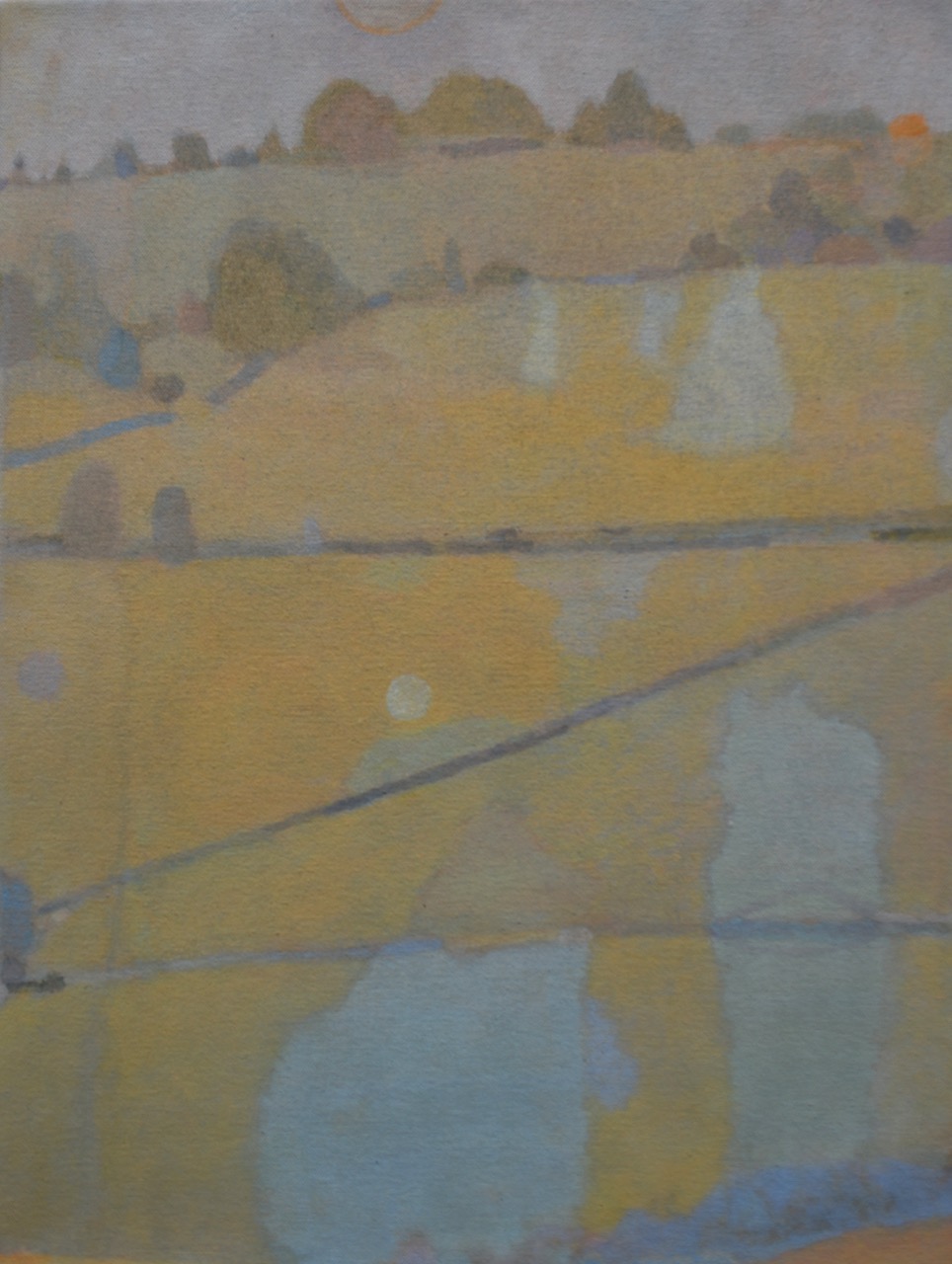 David AbbottMine Own Countrie, 2023
David AbbottMine Own Countrie, 2023 -
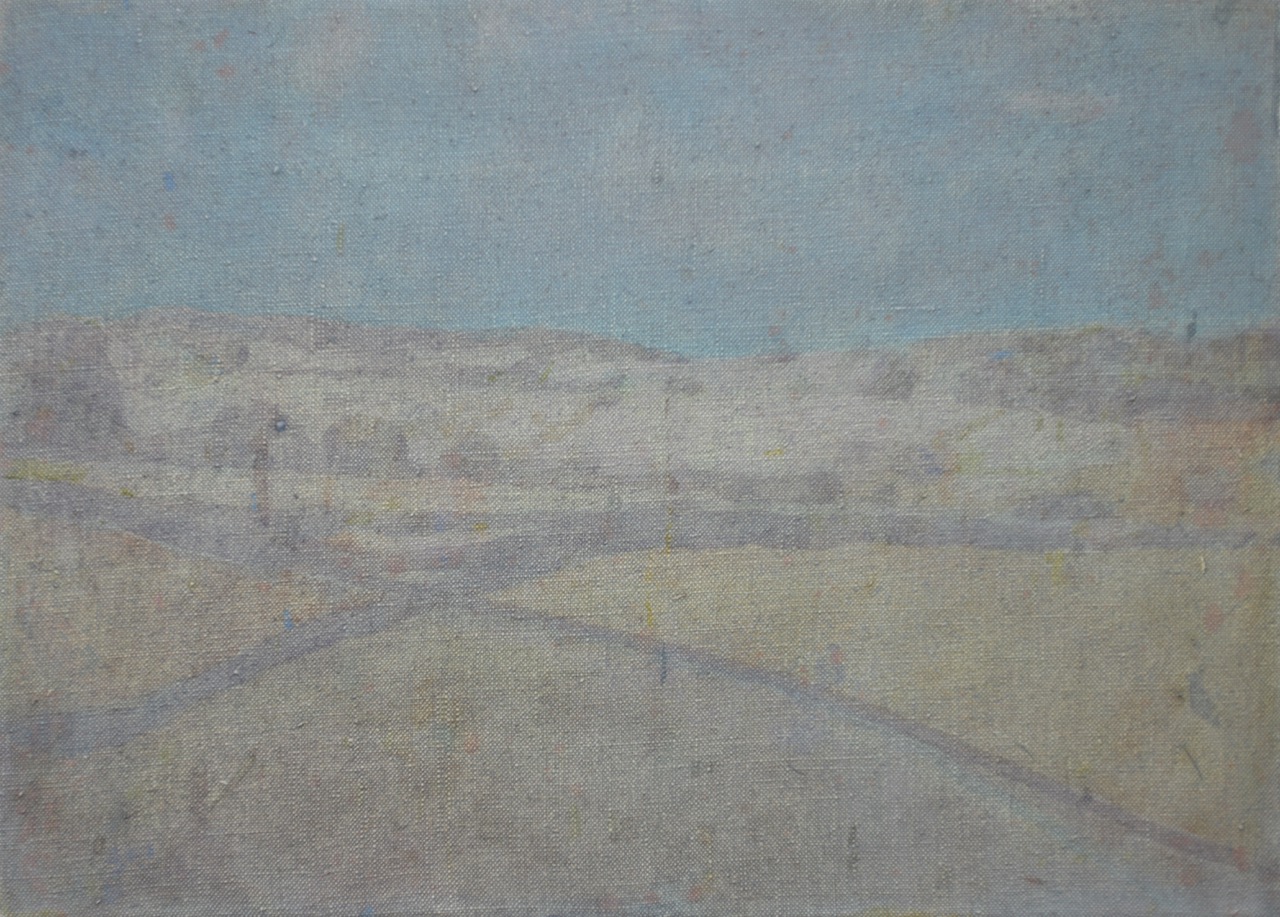 David AbbottOther Days too Perhaps, 2023
David AbbottOther Days too Perhaps, 2023 -
 Juan Fernández ÁlavaAscensión, 2019
Juan Fernández ÁlavaAscensión, 2019 -
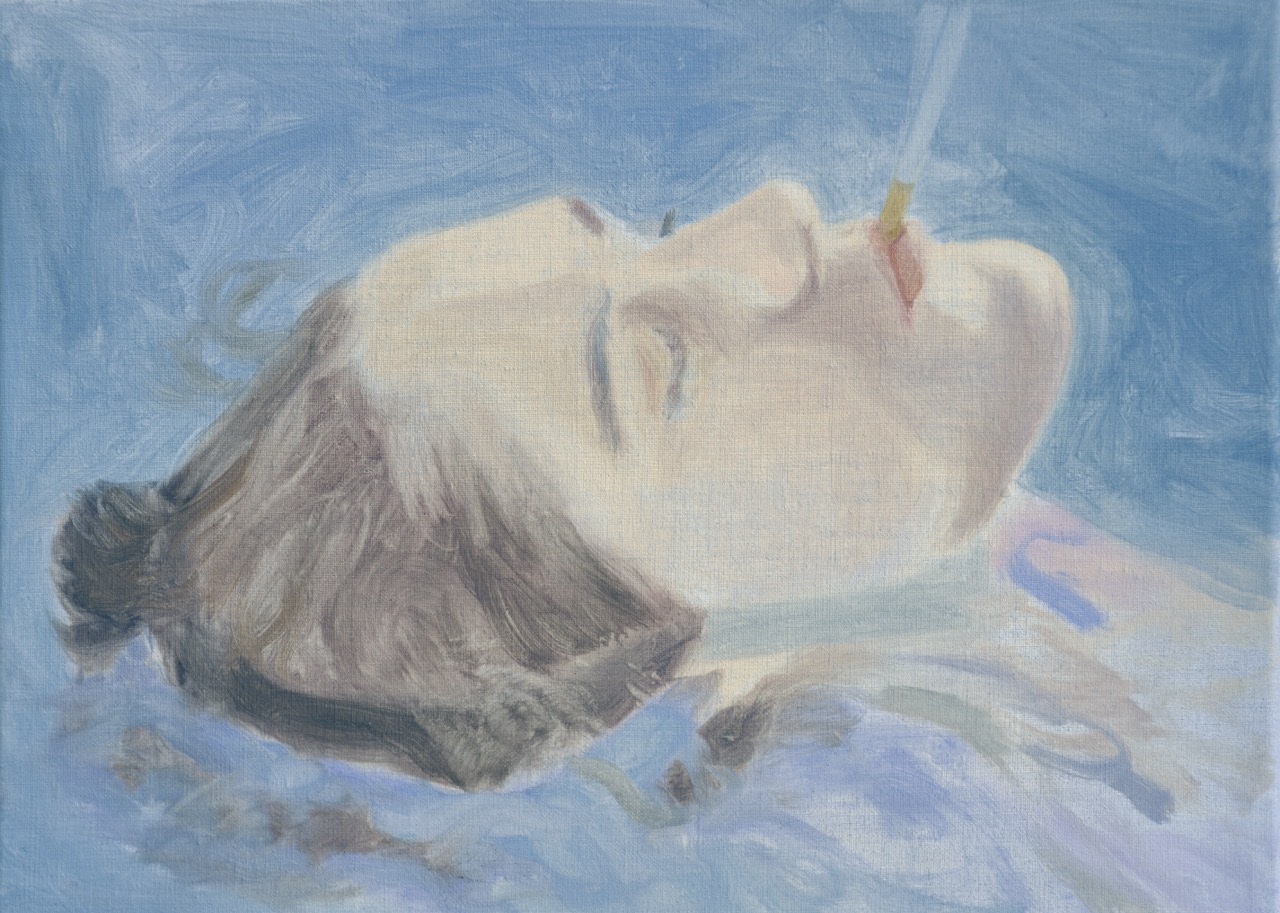 Juan Fernández ÁlavaDesaparecer, 2023
Juan Fernández ÁlavaDesaparecer, 2023 -
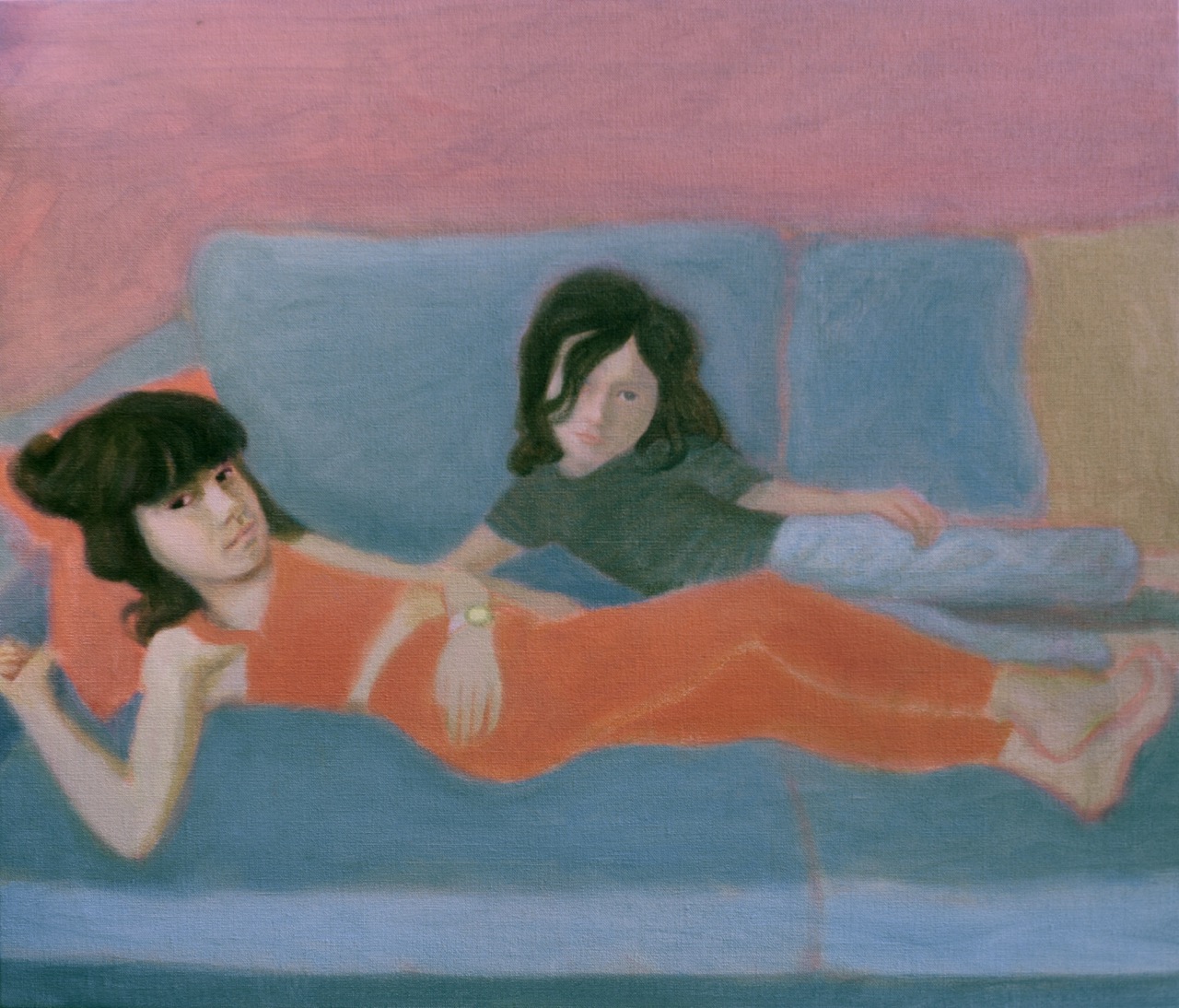 Juan Fernández ÁlavaLas Hijas De María, 2023
Juan Fernández ÁlavaLas Hijas De María, 2023 -
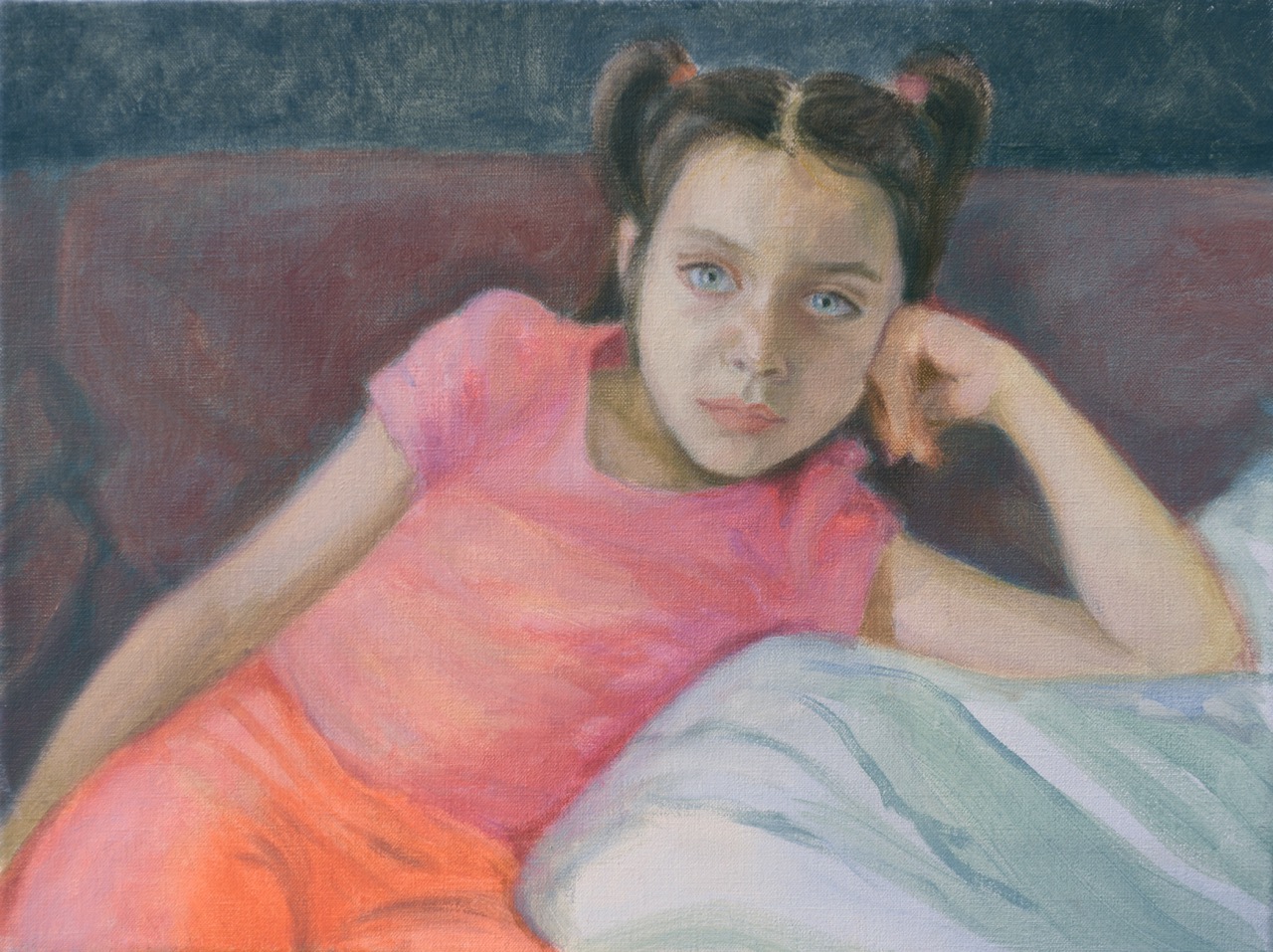 Juan Fernández ÁlavaMati, 2022
Juan Fernández ÁlavaMati, 2022 -
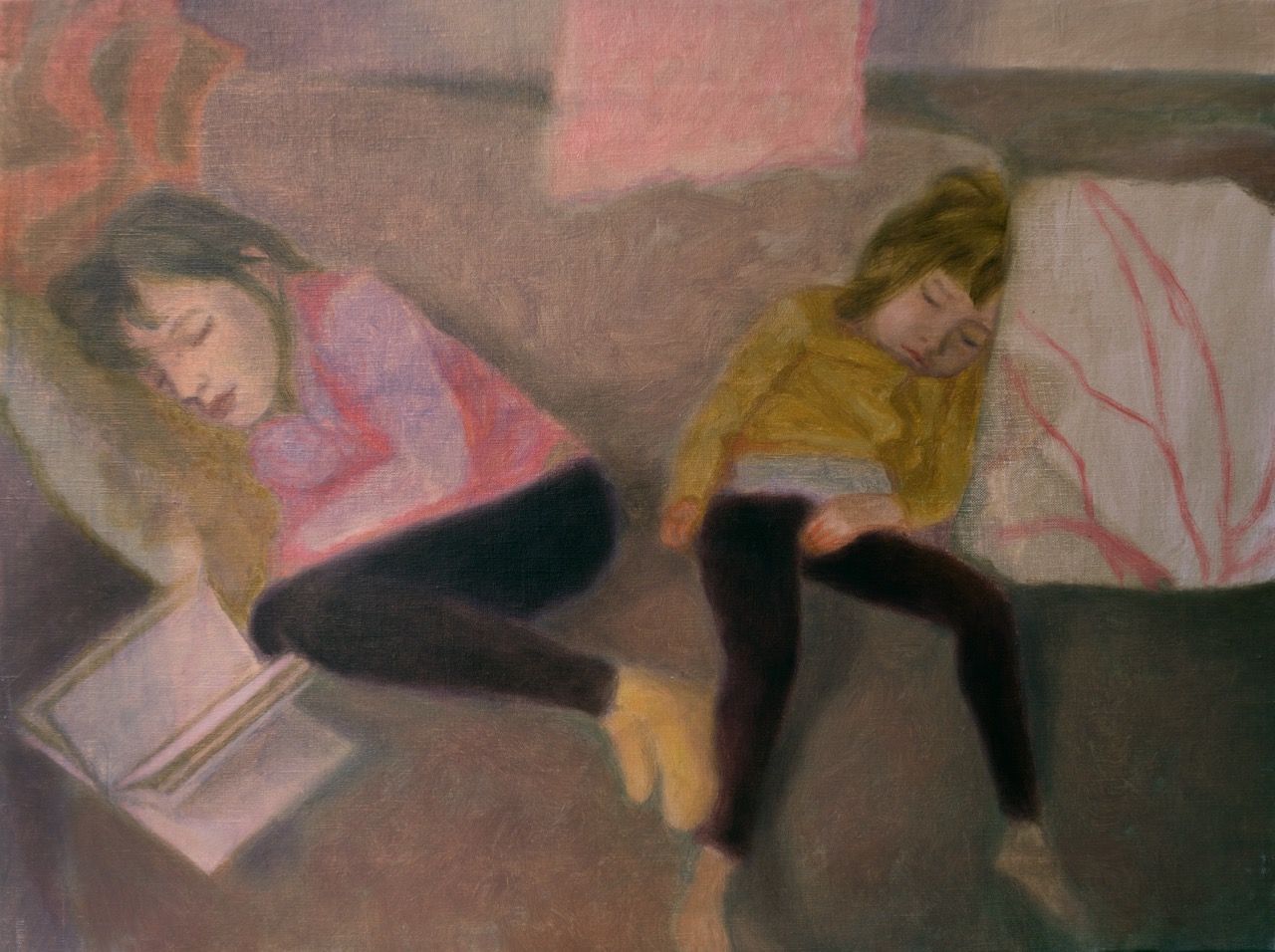 Juan Fernández ÁlavaSleeping Girls, 2019
Juan Fernández ÁlavaSleeping Girls, 2019 -
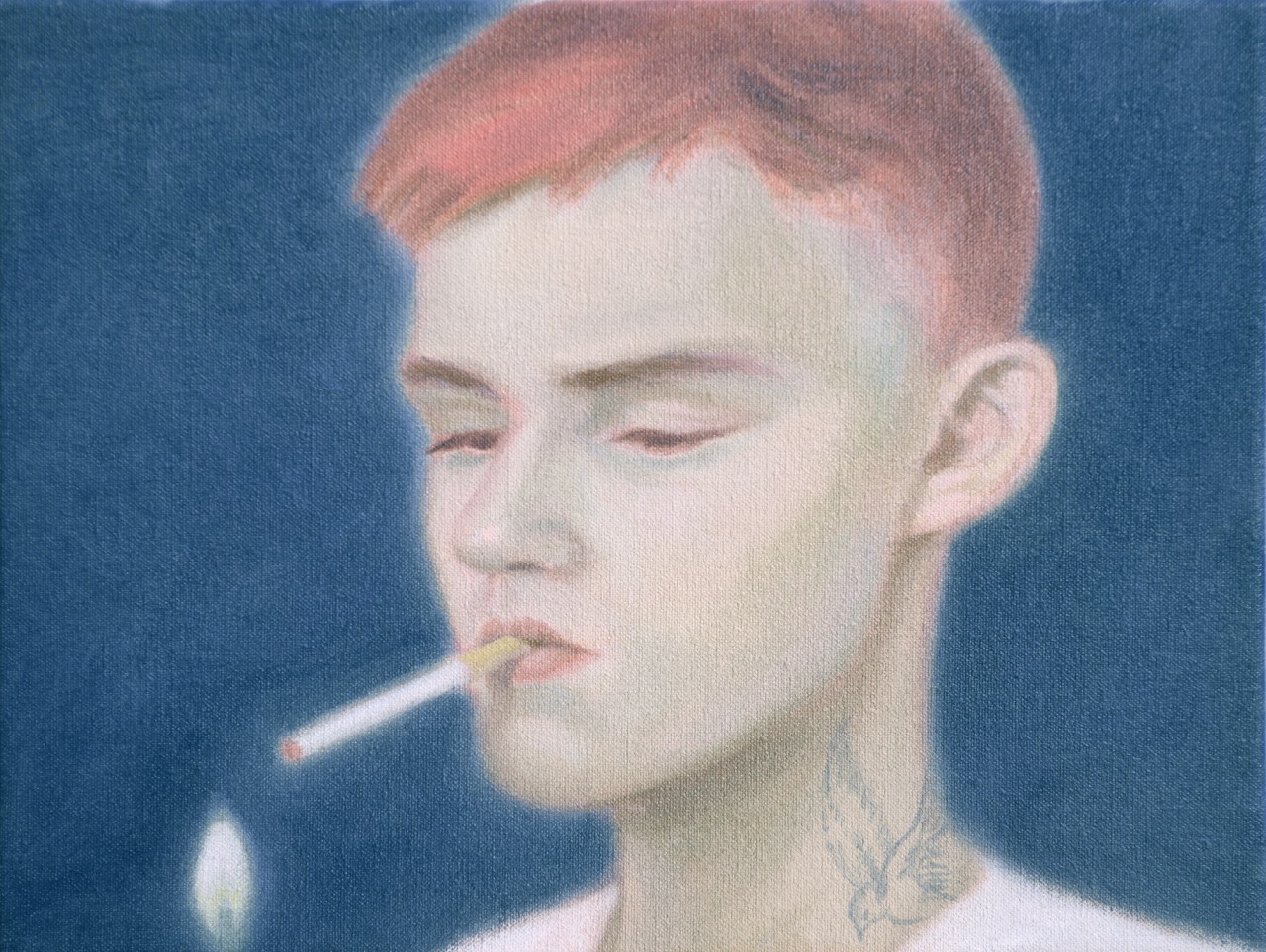 Juan Fernández ÁlavaIniciación, 2023
Juan Fernández ÁlavaIniciación, 2023 -
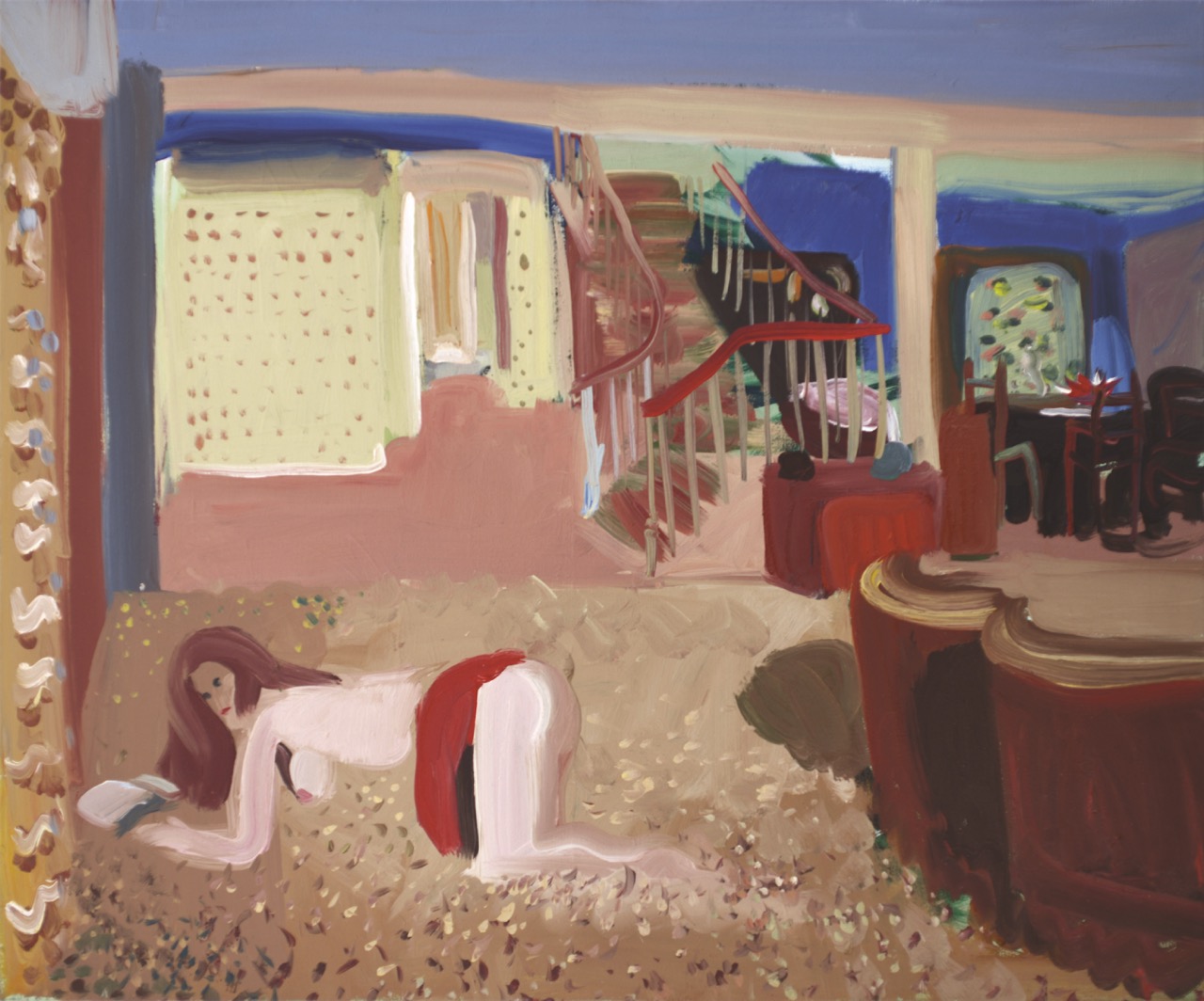 Ofir DorWoman Reading on the Floor, 2017
Ofir DorWoman Reading on the Floor, 2017 -
 Ofir DorThe Judgment of Paris (After Renoir), 2021
Ofir DorThe Judgment of Paris (After Renoir), 2021 -
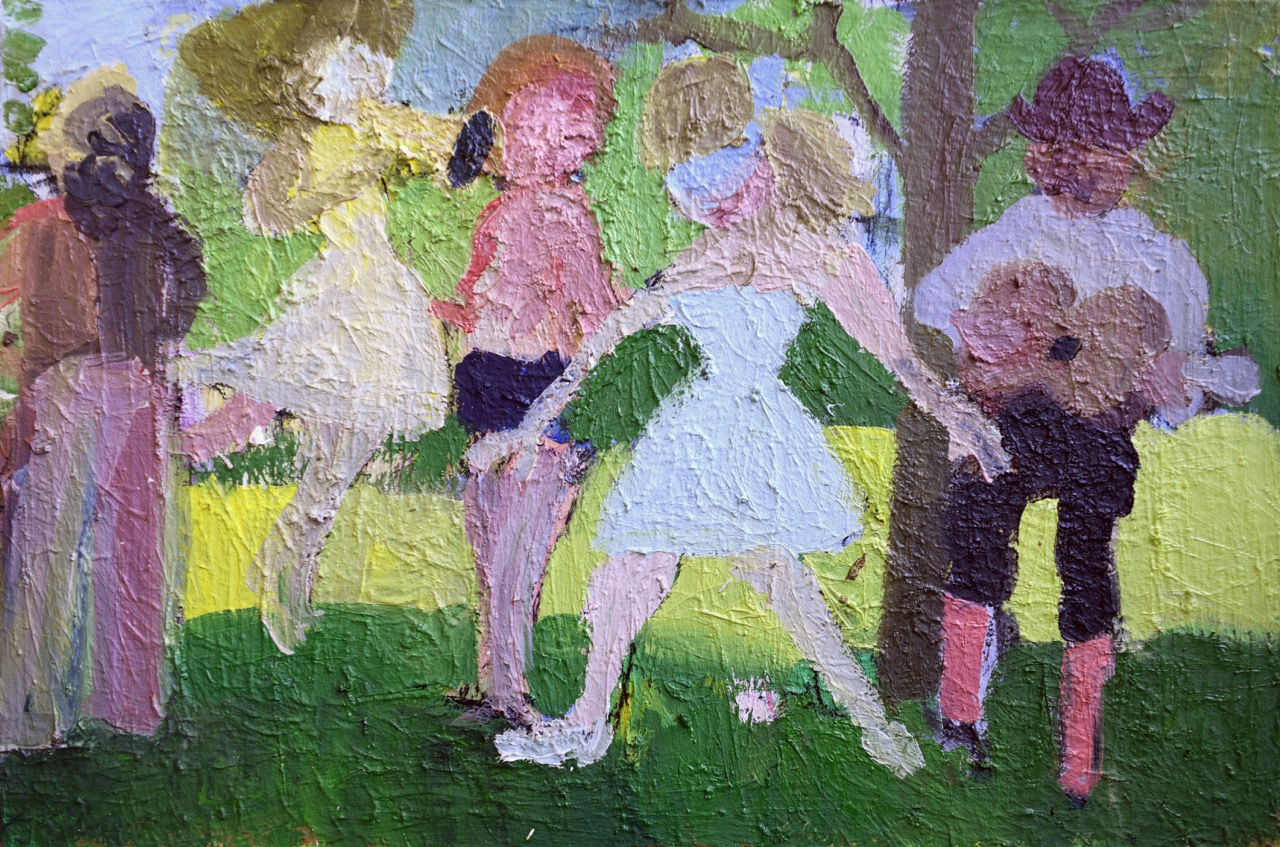 Ofir DorBlind Folded, 2021
Ofir DorBlind Folded, 2021 -
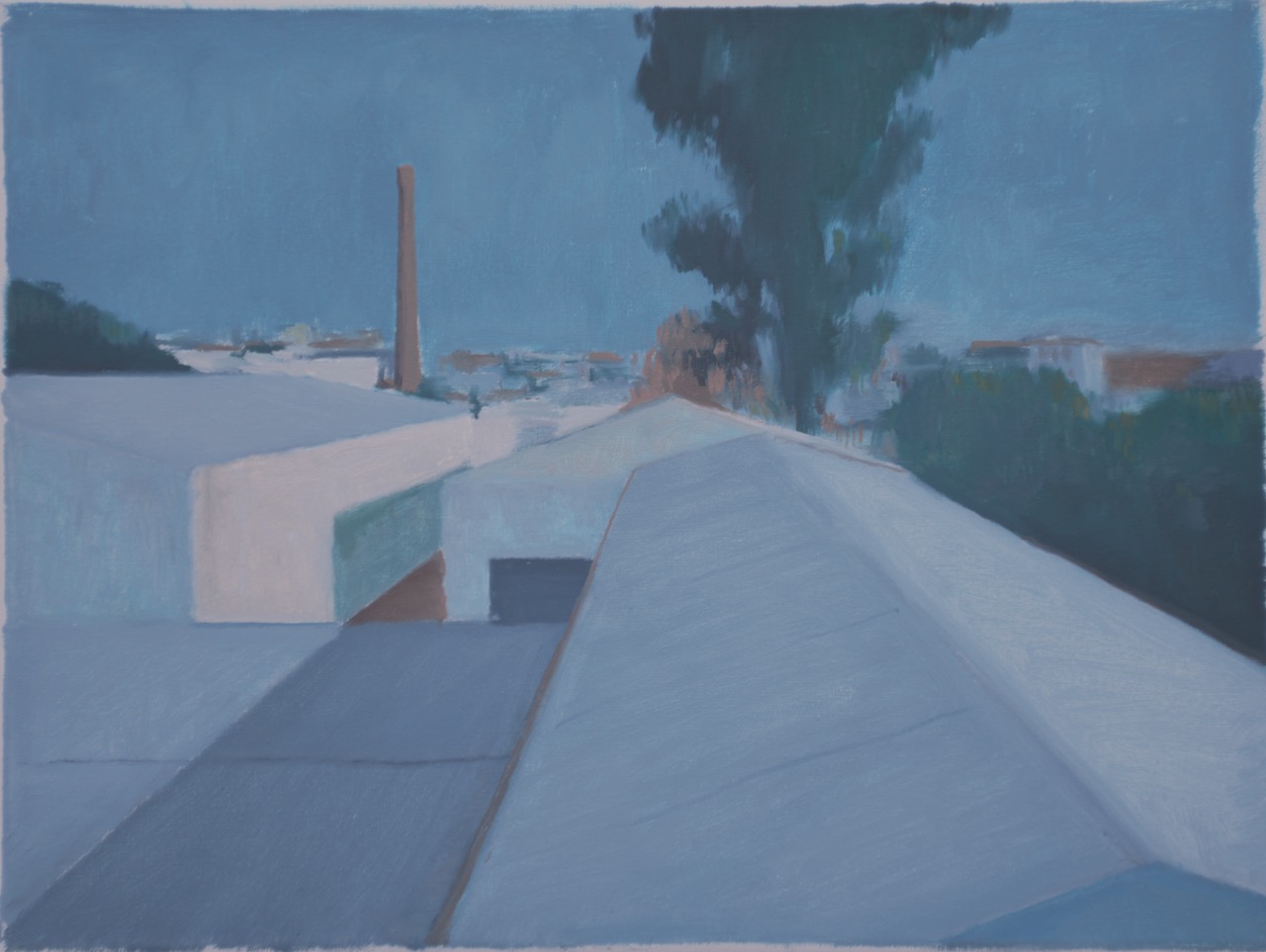 Claus Voss CordeiroBoa Hora View, 2021
Claus Voss CordeiroBoa Hora View, 2021 -
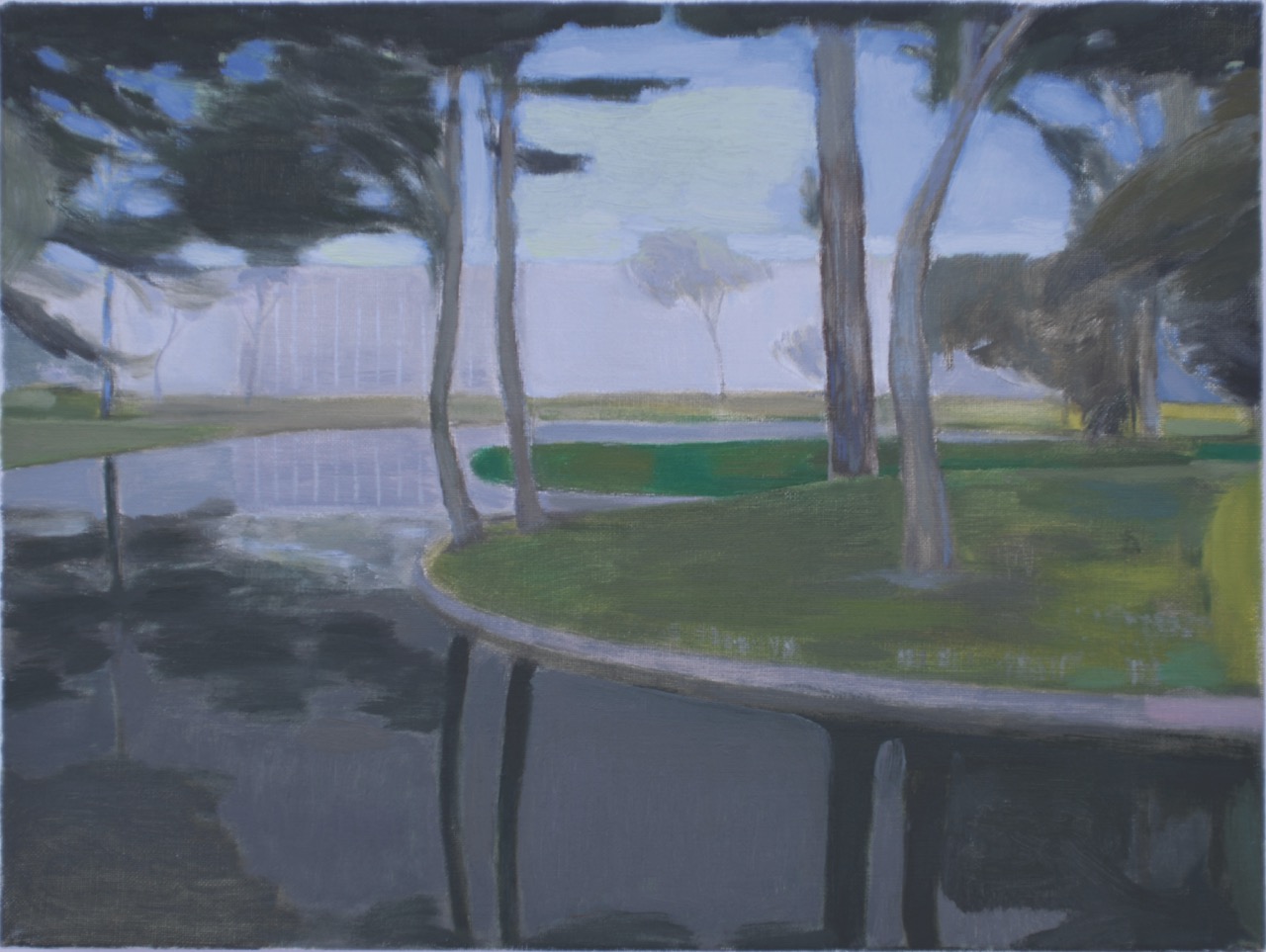 Claus Voss CordeiroCordoaria’s Garden, 2022
Claus Voss CordeiroCordoaria’s Garden, 2022 -
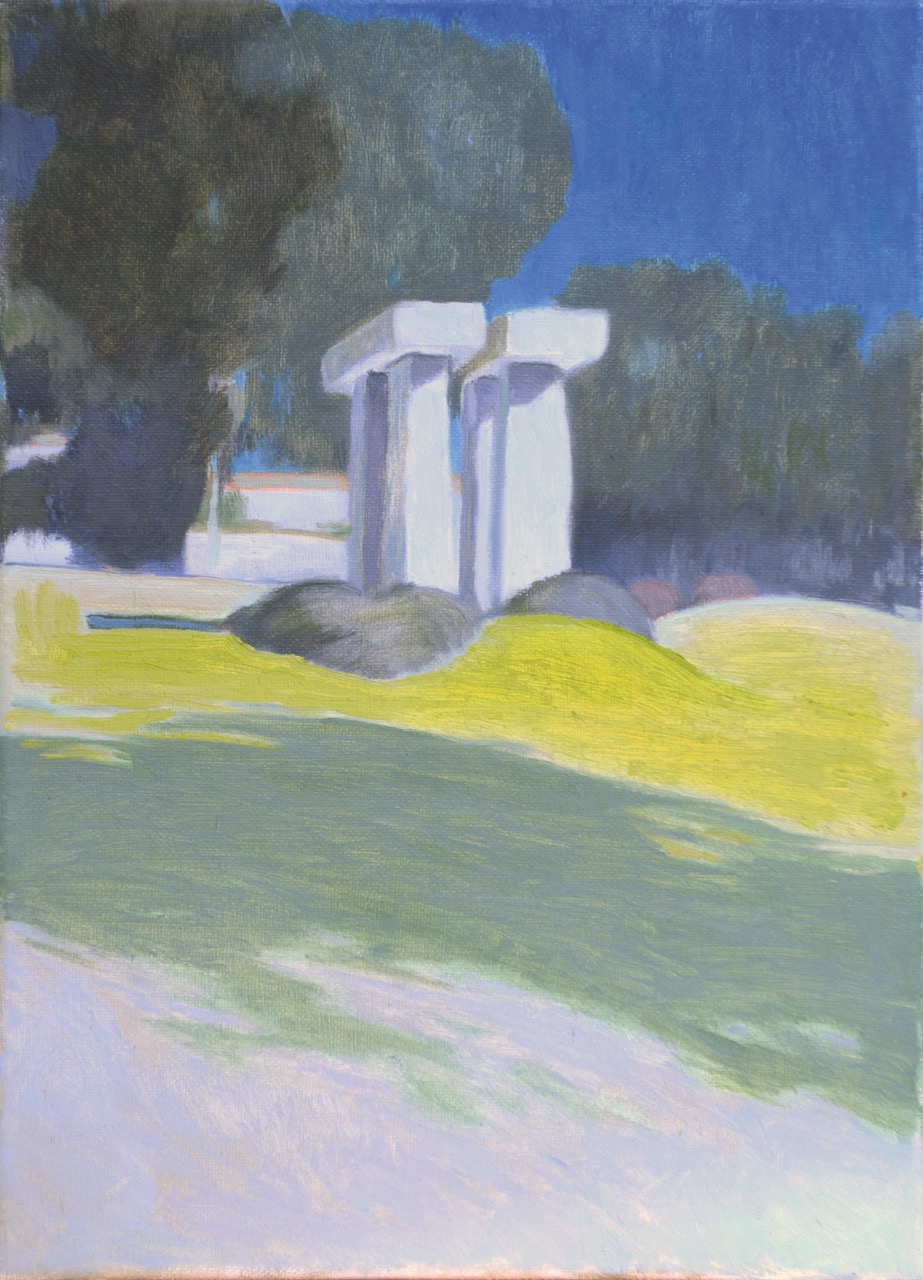 Claus Voss CordeiroP. Vallada’s Garden, 2021
Claus Voss CordeiroP. Vallada’s Garden, 2021 -
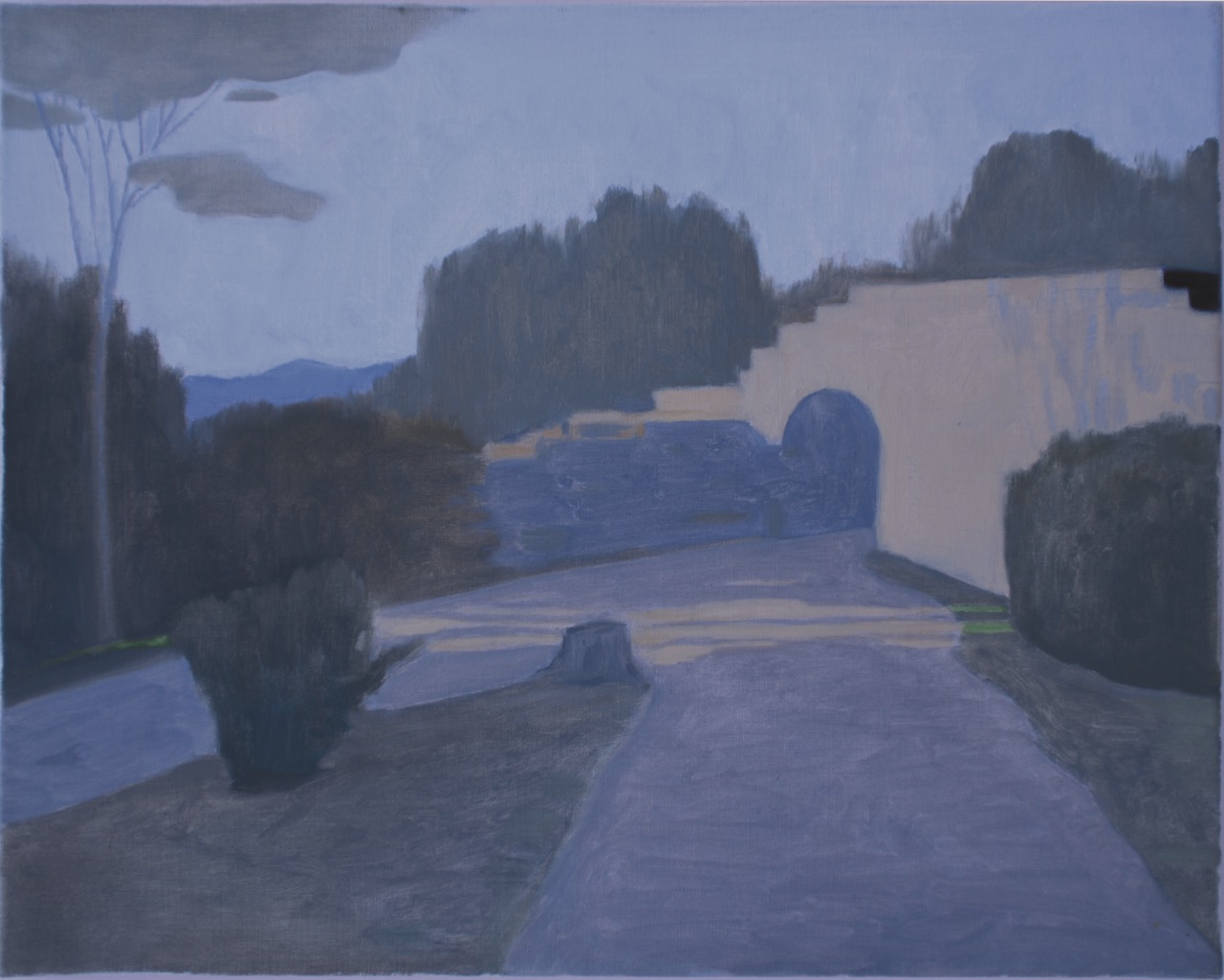 Claus Voss CordeiroPath in Guimarães, 2022
Claus Voss CordeiroPath in Guimarães, 2022 -
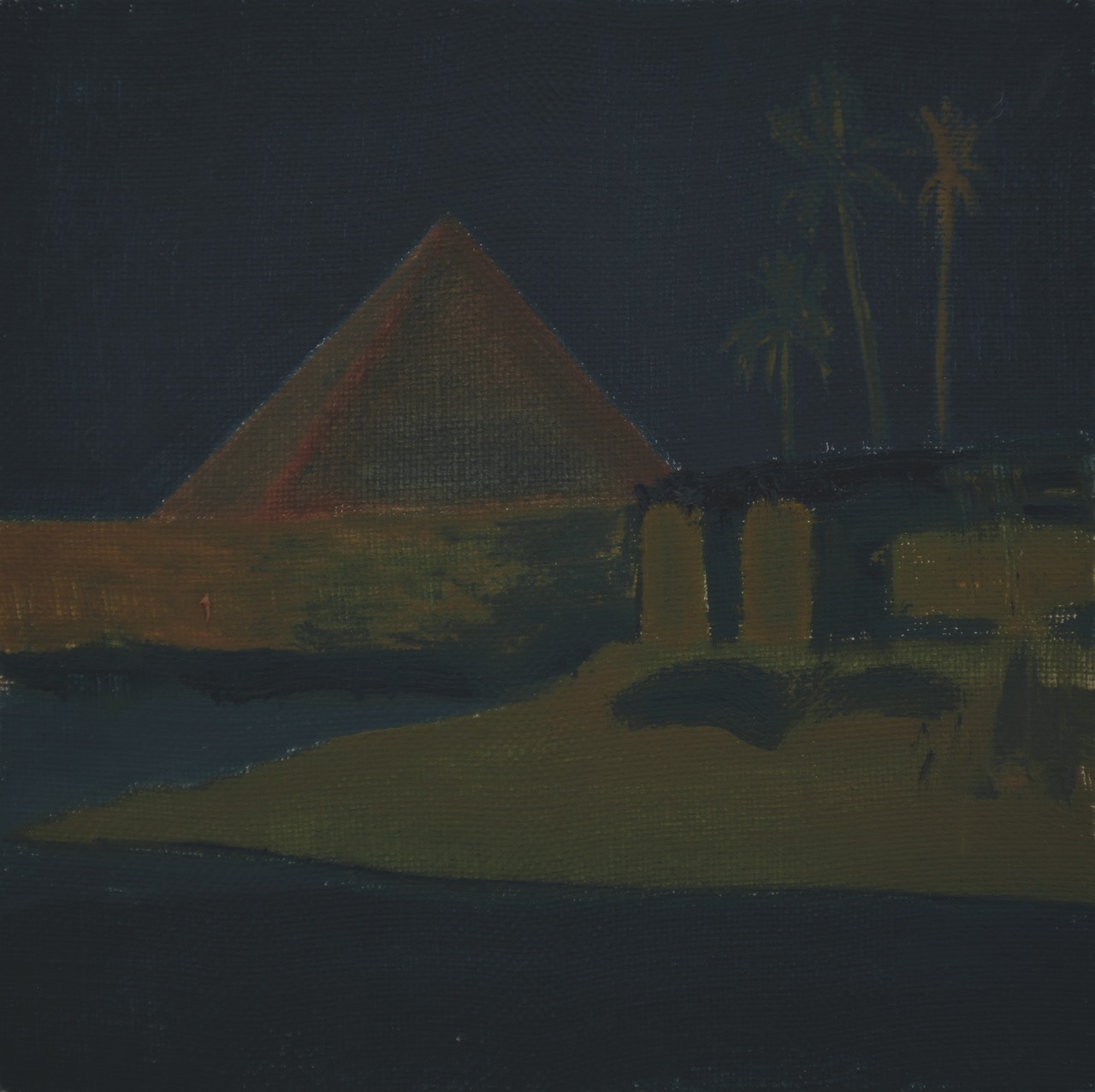 Claus Voss CordeiroUntitled (Pyramid), 2023
Claus Voss CordeiroUntitled (Pyramid), 2023 -
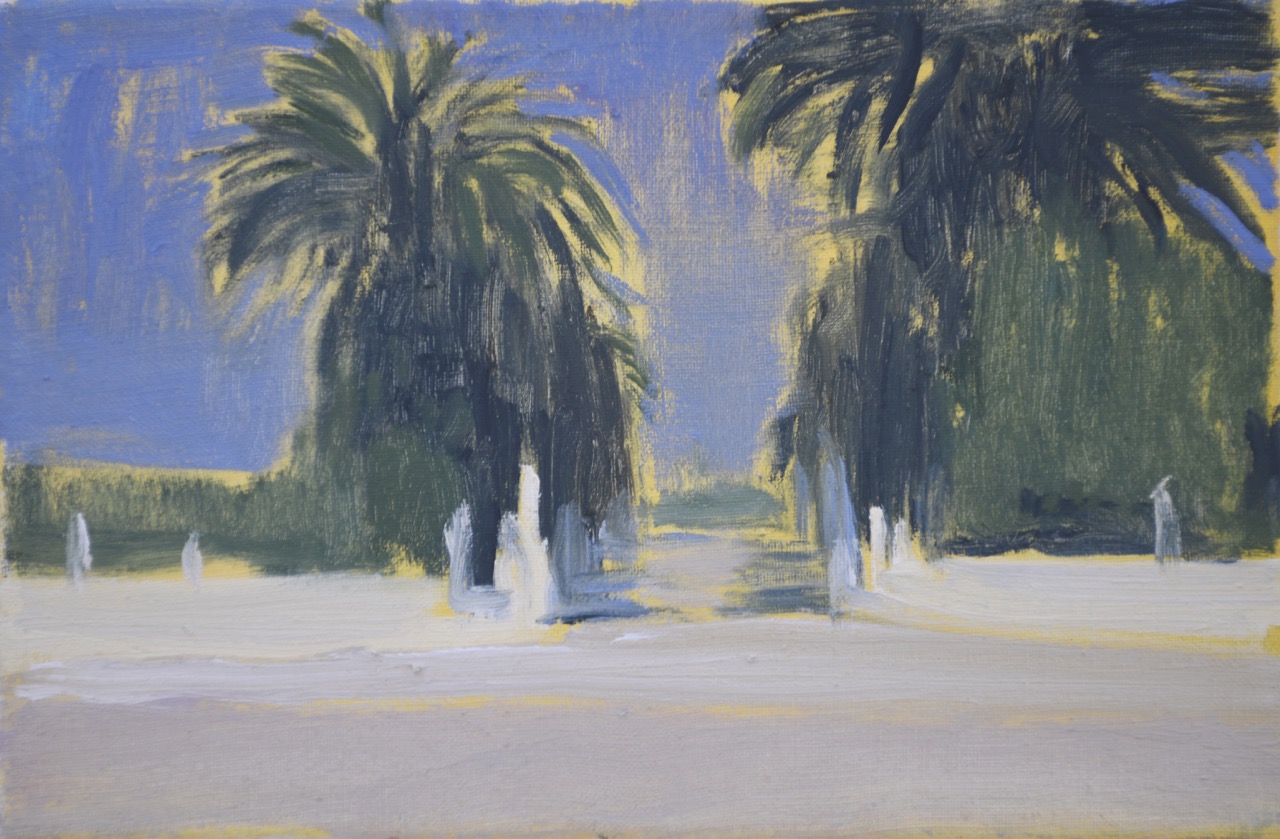 Claus Voss CordeiroUntitled (Palms), 2023
Claus Voss CordeiroUntitled (Palms), 2023 -
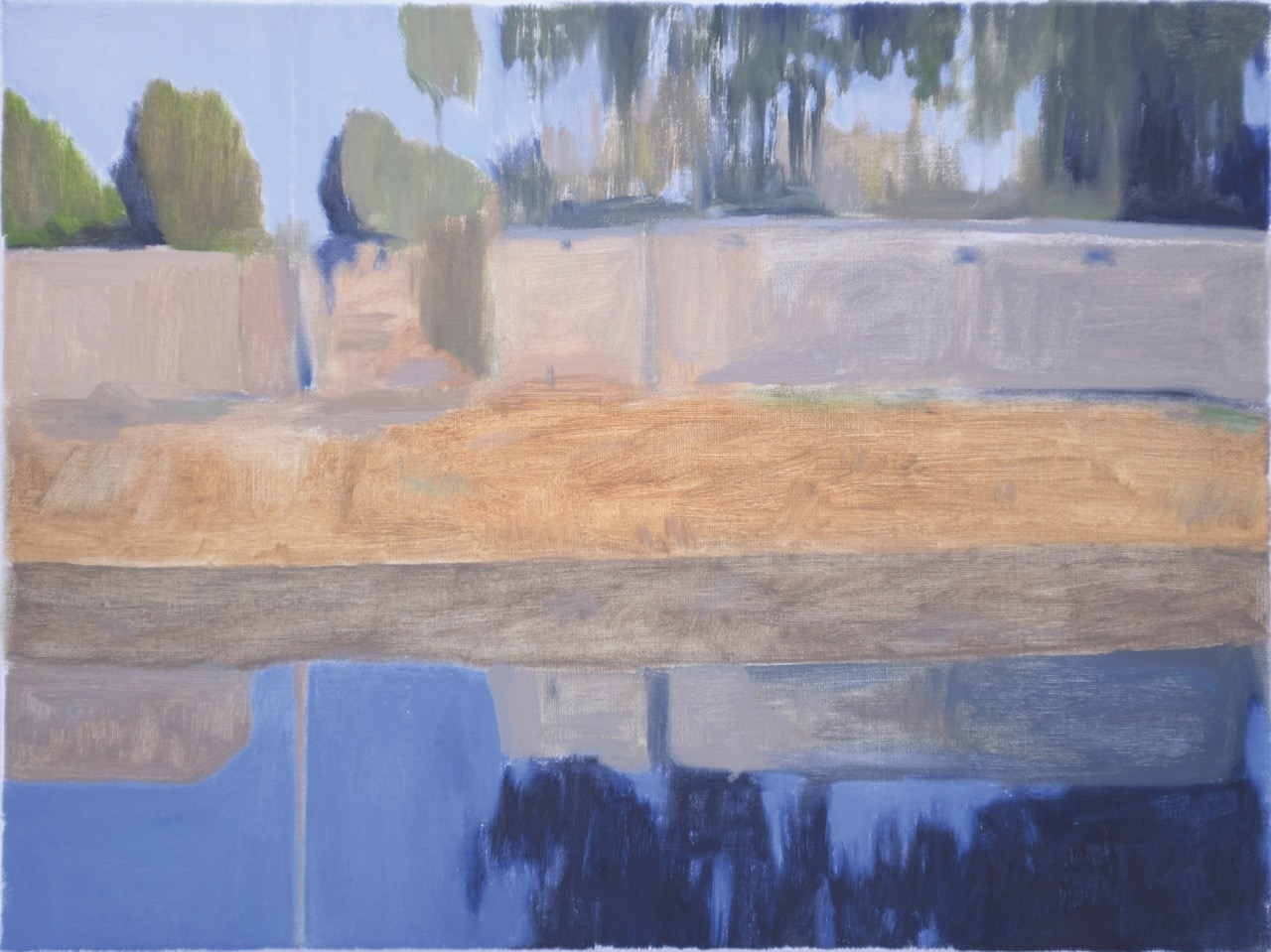 Claus Voss CordeiroRiver Shore, 2022
Claus Voss CordeiroRiver Shore, 2022 -
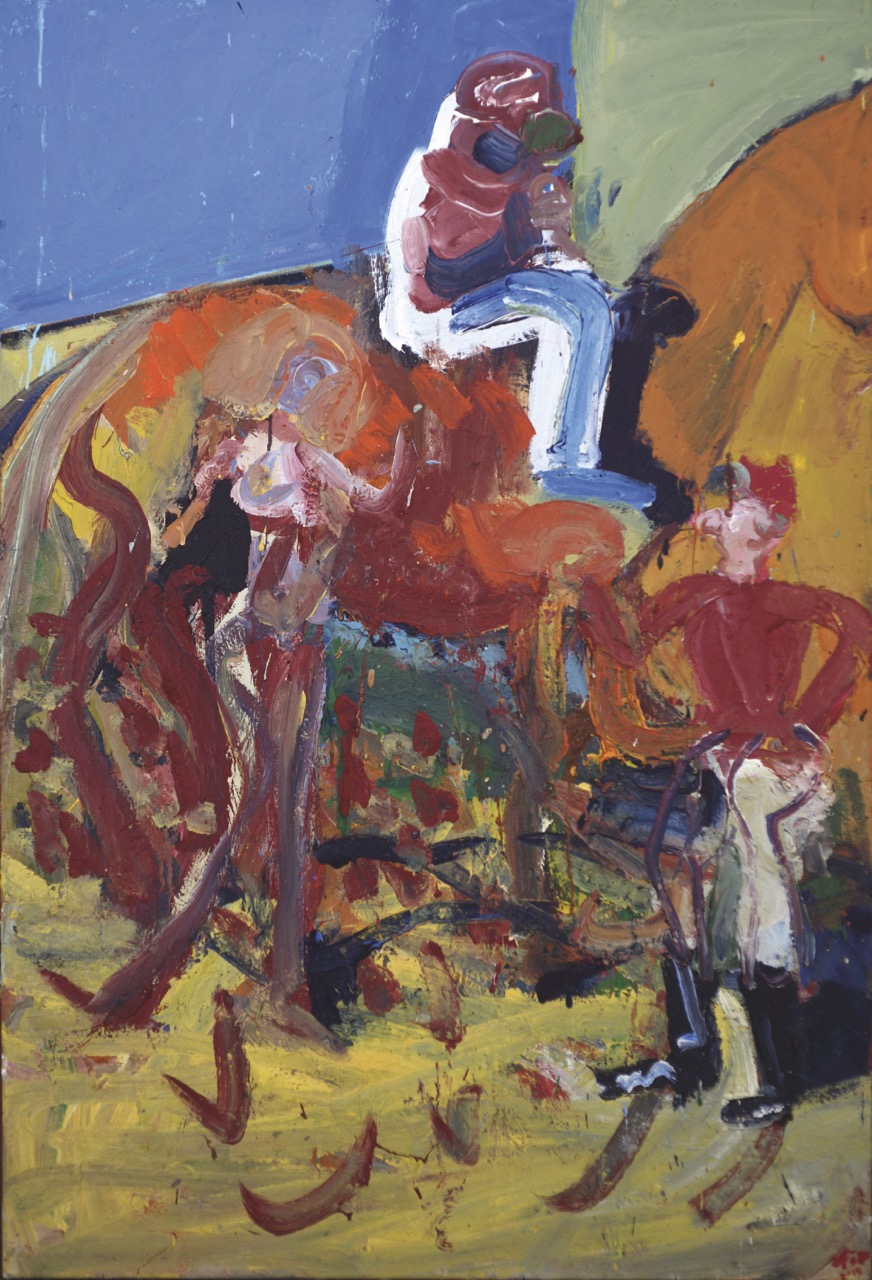 Ofir DorThe Horse, it's Owner, his Wife and the Jockey, 2018
Ofir DorThe Horse, it's Owner, his Wife and the Jockey, 2018
×
